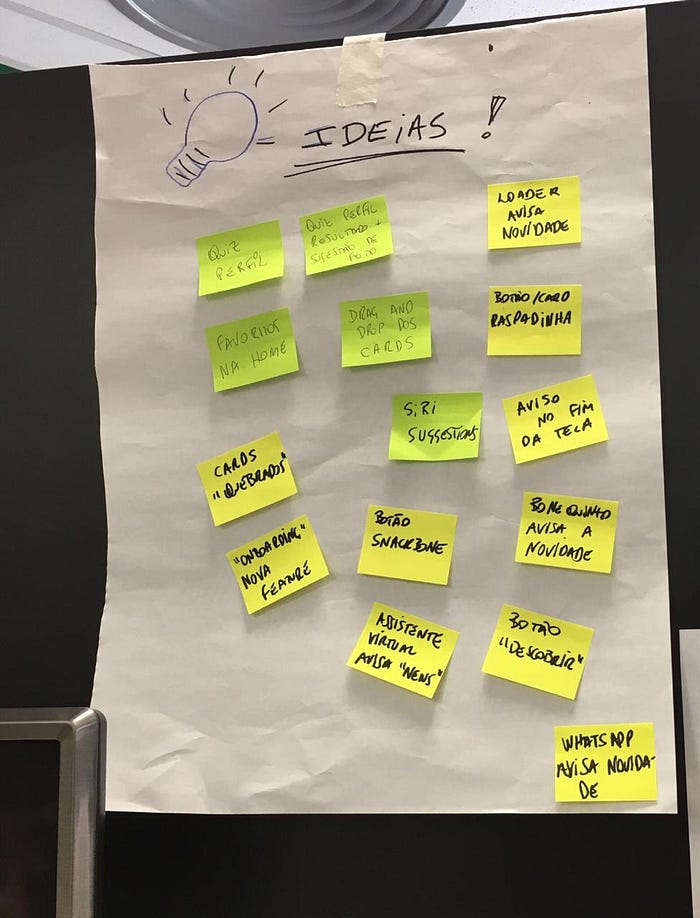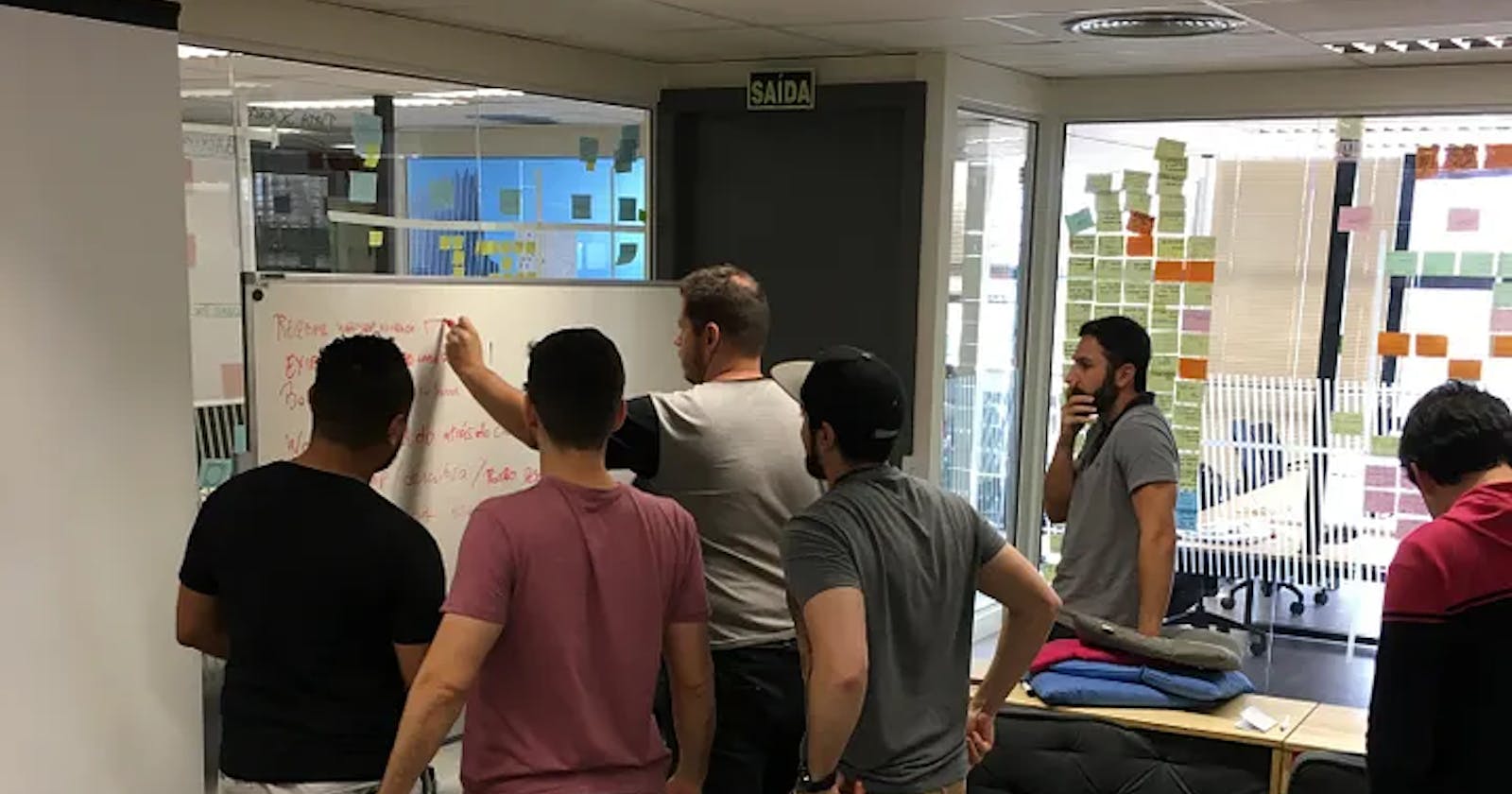Crazy Eights is a fundamental technique in Design Sprint. It's a quick exercise, challenging people to sketch eight distinct ideas in eight minutes. The goal is to go beyond the initial, often less innovative, idea and generate a broad range of solutions for the challenge. (Google - Design Sprint Kit)
To conduct the exercise, follow the steps proposed by Google. Starting with explaining the problem and taking notes. In my experience, we moved on to the ideation phase with the "hands-on" approach. Each participant shared their ideas, and we voted to choose the solution to implement.
Part 1: Gather the Team
Assemble your team, including QAs, designers, developers, and agilists. Everyone's experiences and knowledge will be crucial for the planning outcome.
Part 2: Identify the Problem
Explanation of the problem and note-taking I presented the identified problem from the Sprint and opened the discussion. Aligning everyone's understanding of the problem was essential, and it was a moment for clarifying doubts and jotting down important points.
Part 3: How the exercise works
Some participants felt intimidated as they lacked design background or affinity. It was crucial to emphasize that the drawings didn't need to be perfect; the main objective was to convey the participant's idea. To reassure the team, we established a few ground rules:
No judgment among participants
Any idea is welcome, regardless of its form
The focus should be on taking risks and giving their best to solve the problem
I then explained how the exercise would proceed.
Step 1 - Each participant received a pen and a blank A4 sheet.
Step 2 - The participants folded the sheet three times, creating eight squares within the A4 sheet.
Step 3 - In 8 minutes, each participant would sketch 8 solutions to solve the initial problem.
Step 4 - An online countdown timer with 8 minutes was displayed on the screen to keep everyone aware of the exercise's progress.
Step 5 - Each participant shared their ideas with the group and also noted those they found most interesting during the presentations. Taking notes was crucial for the next part.
Step 6 - In this final step, voting was conducted. Each participant had the opportunity to vote for the idea they considered most relevant to the problem.

After voting, we concluded the exercise with the most voted solution and two other highly-voted ideas. We then discussed the next steps and the requirements for each of these proposed solutions.

Considering the team's diverse experience and backgrounds, we defined the MVP to be executed in the next Sprint. Additionally, we kept other ideas and possible solutions in our backlog. During each planning, we revisited this board to assess their applicability and value to the user.
Positive aspects: In a short time, we created a solution that addressed a user's need. It was a moment for everyone to express their ideas, participate, and think "outside the box," which often gets overlooked in daily routines. The team felt engaged and part of the solution-building process. Since everyone participated, there was a clear understanding of what needed to be developed to achieve the desired result.
Areas for improvement: In this exercise, we set a rule that the solution should be delivered within a two-week Sprint, so we had to limit the functionality's scope. The time for the exercise could have been longer. In total, we completed all activities in 40 minutes, which made some steps short, and we couldn't fully utilize the explanation of the problem. For the next Crazy Eight, we plan to allocate 1 hour for the team and specify business requirements more clearly to ensure all ideas can be implemented and meet the criteria during the voting phase.
This was our experience with Crazy Eight in our team. We know there are several tools that can help create innovative solutions, and we practiced one of them.
How about you? What practices have you been using? Share your thoughts!

